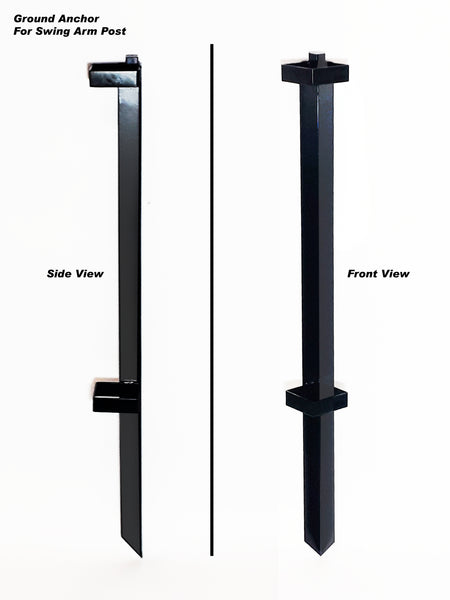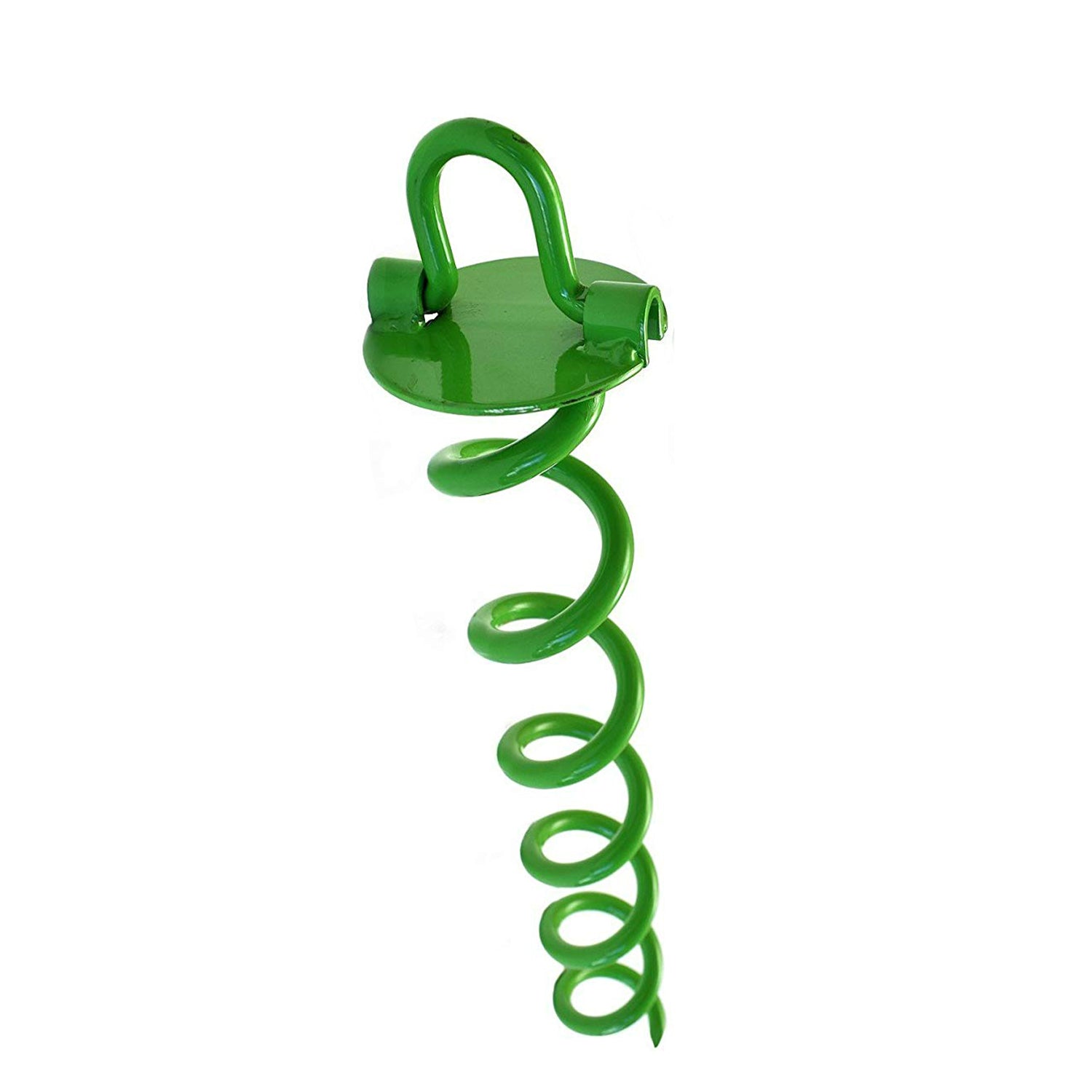Important Characteristics to Consider When Shopping for a High-Quality Ground Anchor
Important Characteristics to Consider When Shopping for a High-Quality Ground Anchor
Blog Article
Discover the Various Sorts Of Ground Anchor for Your Next Project
From auger anchors, which stand out in varied soil problems, to risk supports designed for temporary installments, the alternatives are many. In addition, concrete and screw anchors existing special benefits in details situations, while deadman supports are customized for applications calling for resistance to lateral pressures.

Auger Anchors
Auger supports are a popular selection in various building and construction and landscaping jobs due to their one-of-a-kind style and reliable anchoring capacities. These supports include a helical screw-like shaft that is driven right into the ground, enabling a secure and safe and secure hold. The spiral style helps with simple installment and maximizes resistance against lateral forces, making auger supports particularly reliable in applications such as fencing, temporary structures, and erosion control.
The installment process of auger supports is fairly uncomplicated. Auger anchors can be easily eliminated and reused, which includes to their cost-effectiveness and sustainability.
Among the substantial benefits of auger anchors is their ability to disperse tons equally across the surrounding soil, reducing the danger of dirt disturbance and minimizing environmental influence. Furthermore, they are less prone to heaving or loosening over time contrasted to traditional securing approaches. Auger supports are an exceptional selection for jobs needing dependable and sturdy anchoring remedies.

Stake Anchors
When it comes to safeguarding frameworks in a selection of outdoor applications, stake supports use a straightforward and dependable service. These supports are typically constructed from sturdy materials such as steel or light weight aluminum, developed to hold up against environmental stresses while supplying ideal stability. Their simple style enables for fast installment, making them an excellent selection for temporary or permanent anchoring requirements.
Risk anchors are particularly useful in safeguarding camping tents, covers, and various other lightweight frameworks against wind and climate. They operate by being driven into the ground at an angle, creating a solid hold that withstands pull-out pressures - Ground Anchor. The efficiency of risk anchors relies on numerous elements, consisting of dirt type, dampness web content, and the angle of installment
For included safety and security, several risk anchors feature attachment factors for straps or ropes, enabling tension changes as required. In applications such as landscape design or building, they can properly stabilize tools or frameworks on irregular terrain. Generally, stake anchors give a economical and functional option for securing numerous exterior installments, making them a preferred option for specialists and do it yourself enthusiasts alike.
Concrete Anchors
Concrete anchors provide a robust option for safeguarding structures to concrete surfaces, guaranteeing stability and safety and security in numerous applications. These anchors are vital for projects varying from domestic constructions to large-scale commercial installations. They are available in various kinds, including growth anchors, sticky supports, and undercut supports, each designed for certain tons needs and environmental problems.
Glue supports utilize high-strength epoxy or resin to bond the support to the concrete, supplying remarkable load-bearing capabilities, specifically in fractured concrete scenarios. Undercut supports develop an unique shape within the concrete, giving phenomenal holding power, especially in applications where tensile lots are prevalent.
Choosing the appropriate concrete anchor involves taking into consideration aspects such as the weight of the tons, the condition of the concrete, and environmental conditions. Appropriate setup methods are critical to make certain optimum performance and integrity. When executed correctly, concrete anchors considerably improve the structural honesty of numerous projects, making them indispensable in modern-day construction practices. Comprehending the details requirements of your job will assist in choosing the best kind of concrete anchor for the task.
Screw Anchors

Screw supports are a versatile fastening solution that can be efficiently employed in a selection of applications where conventional concrete supports may not be sufficient. These supports contain a helical layout that allows them to be quickly driven right into the ground, making them optimal for use in dirt and other substratums. Their unique framework gives outstanding holding power and resistance to pull-out forces, making them suitable for countless tasks, from landscape design to architectural assistance.
Among the primary advantages of screw supports is their convenience of setup. They call for marginal equipment and can typically be mounted without the demand for excavation, Source which conserves both time and labor costs. Additionally, screw supports can be gotten rid of and reused, supplying a lasting service for temporary applications.
Screw supports are particularly beneficial in locations where soil problems are testing, such image source as loose or sandy dirts. Their capacity to be installed at differing depths permits personalization based on specific project demands. Overall, screw anchors supply a reliable and dependable securing method, making them an outstanding selection for designers and contractors looking for effective options for their tasks.
Deadman Anchors
Deadman anchors serve as a robust solution for maintaining structures in difficult conditions, especially where standard anchoring techniques may fall short. These anchors include large, hefty objects hidden underground, which create resistance against side forces. The design typically involves a straight part, such as a block of concrete or a metal plate, buried in the soil, to which cables or bands are connected.
The efficiency of deadman anchors exists in their capability to disperse lots over a bigger location, lowering the risk of failing in unpredictable soil conditions. They are especially valuable in applications such as preserving walls, short-lived frameworks, and incline stablizing, where dirt movement can endanger the integrity of the structure.
Installation of deadman supports calls for careful planning to guarantee they are positioned at the right depth and orientation, optimizing their load-bearing ability. While they might call for more labor and material than light-weight anchors, their reliability in adverse problems makes them invaluable for lasting tasks. Deadman supports are versatile and can be adapted to numerous applications, making them a go-to option for engineers facing distinct difficulties in their tasks.
Conclusion
In recap, picking the suitable sort of ground support is crucial for making sure stability and safety and security in different projects. Auger supports master diverse dirt conditions, while stake anchors fit temporary applications. For concrete surface areas, expansion and glue anchors offer reputable options, and screw supports provide convenience in difficult surfaces. Deadman supports are particularly reliable in withstanding side forces for preserving walls. Mindful consideration of these choices will boost job outcomes and architectural integrity.
In addition, concrete and screw supports existing unique advantages in certain situations, while deadman supports are customized for applications needing resistance to side forces - Ground Anchor.Auger anchors are a popular option in numerous building and landscaping tasks due to their Learn More Here unique style and reliable securing capabilities. They come in different types, including expansion supports, glue anchors, and undercut anchors, each created for specific tons needs and environmental problems
Sticky anchors utilize high-strength epoxy or resin to bond the anchor to the concrete, using remarkable load-bearing capabilities, specifically in fractured concrete situations. Overall, screw supports provide a effective and trustworthy anchoring approach, making them an outstanding choice for engineers and contractors looking for effective services for their jobs.
Report this page